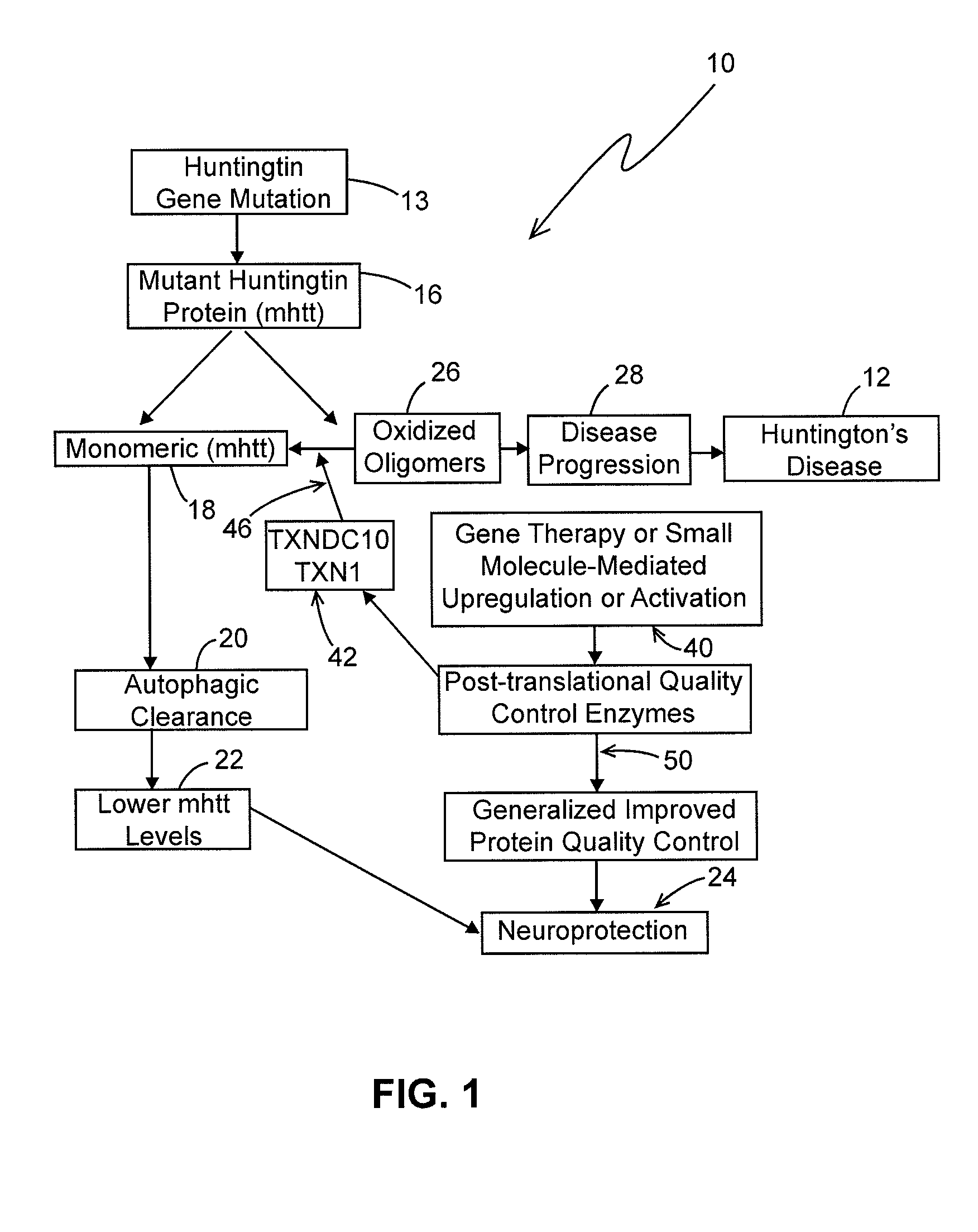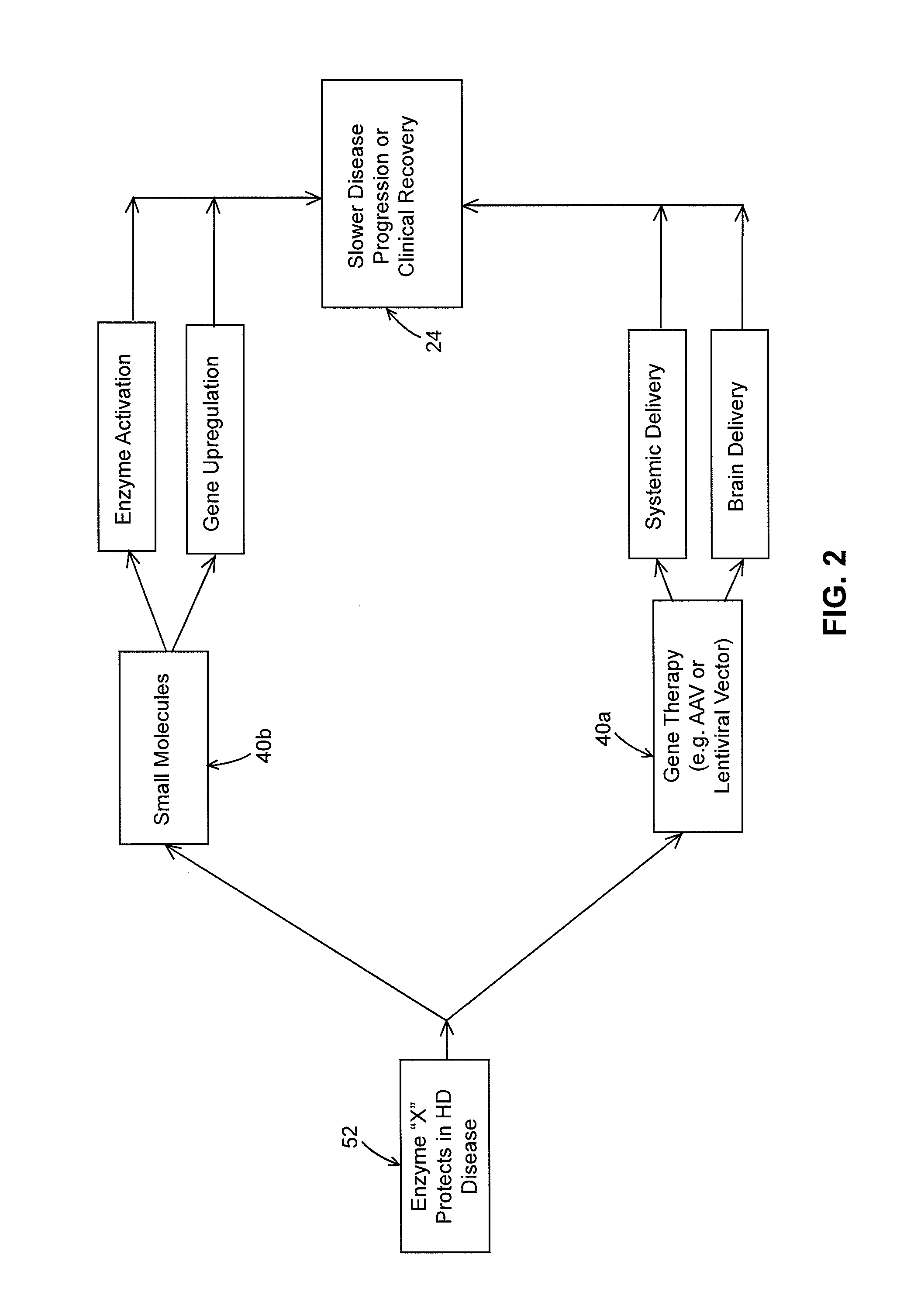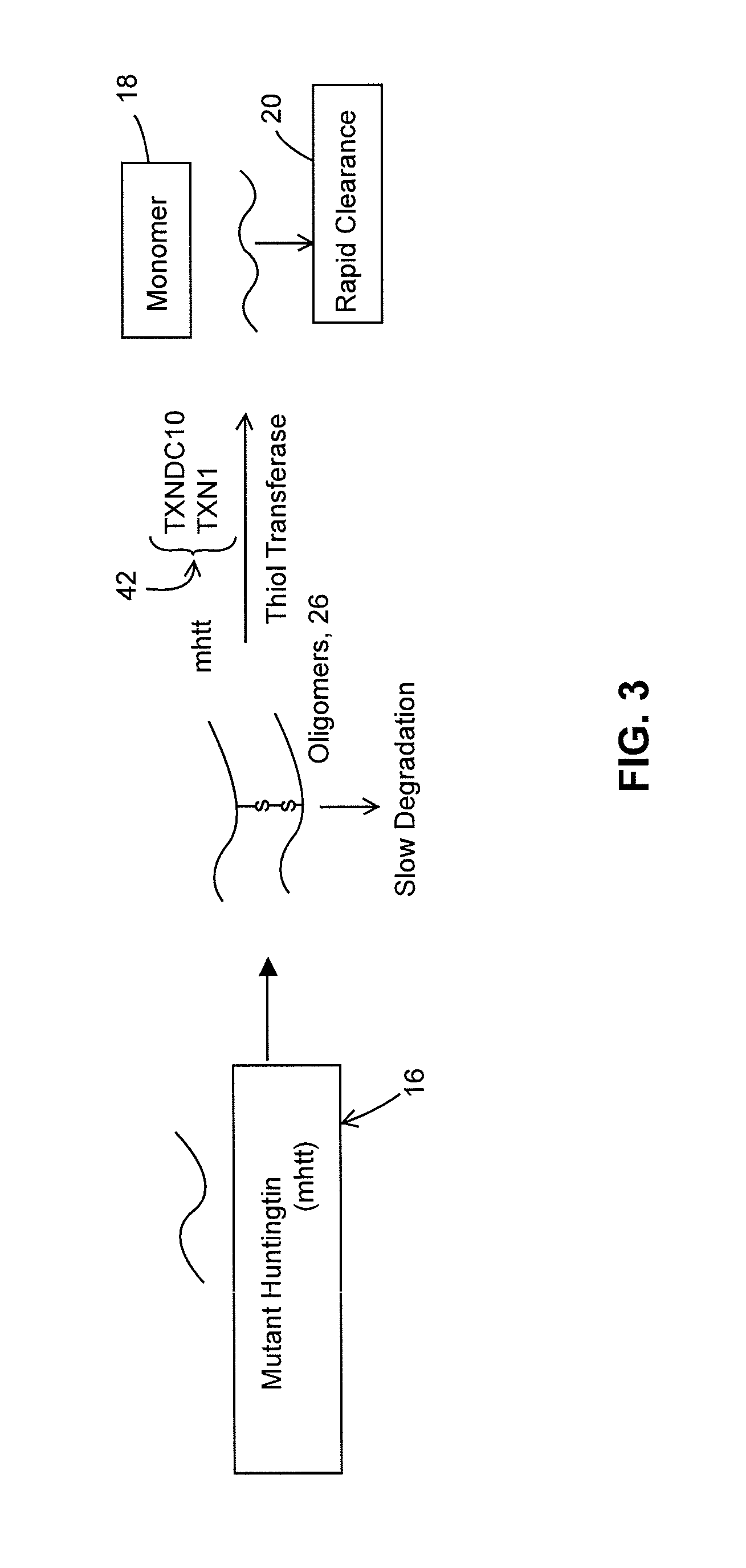Method for reducing protein misfolding and accumulation in Huntington'S disease cells
a technology of protein misfolding and accumulation, which is applied in the field of can solve the problems of neurodegenerative diseases affecting society, neuronal dysfunction and loss, and loss of brain functions and disease manifestations, so as to reduce protein misfolding in cells, and increase the expression of specific thiol transferases
- Summary
- Abstract
- Description
- Claims
- Application Information
AI Technical Summary
Benefits of technology
Problems solved by technology
Method used
Image
Examples
example 1
[0027]The expression of forms of mhtt in cells that cannot form these oligomers has been shown to lead to a more rapid degradation and clearance of mhtt by an autophagy degradation pathway (Fox et al., supra), and gene products (enzymes) have therefore been sought that can convert oligomeric to monomeric protein. Embodiments of the present invention include therapeutic manipulation of thiol transferases and related enzymes to promote clearance of mhtt in HD. A genetic screen in cultured cells to identify thioltransferase enzymes that can decrease levels of mutant huntingtin protein identified two proteins: human thioredoxin 1 (TXN1) and human TXNDC10. A more rigorous secondary screen confirmed the findings from the initial screen. Genes encoding TXN1 and TXNDC10 were mutated such that enzymatically inactive (TXN1 and TXNDC10) proteins were expressed as controls leading to the demonstration that both TXN1 and TXNDC10 decrease mutant huntingtin protein levels in cells.
[0028]FIG. 4 sho...
example 2
[0031]To extend the findings from cell culture experiments described in EXAMPLE 1 to mouse experiments TXN1 and mutant TXN1 DNA inserts were subcloned into a lentiviral four plasmid expression system. This was used to generate lentivirus in 293T cells. Virus was quantified by p24 ELISA. Viruses expressing N171 huntingtin fragments and either active or inactive TXN1 were co-injected into striata of 8-week old B6 / C3H F1 female mice using stereotaxic surgery. Group 1=N171-18Q huntingtin+mutant TXN1; group 2=N171-82Q huntingtin+mutant TXN1; group 3=N171-82Q huntingtin+active TXN1. Four ng p24 of each virus were used per injection. The mice were sacrificed 8 weeks later and perfused with fixative for neuropathology analysis. Brain sections were fluorescently stained for huntingtin protein and Nissl substance. Images were captured using a confocal microscope. A stereologic approach called the nucleator was used to quantify neuronal cell body volumes in the region of the injection site. De...
PUM
| Property | Measurement | Unit |
|---|---|---|
| Structure | aaaaa | aaaaa |
Abstract
Description
Claims
Application Information
 Login to View More
Login to View More - R&D
- Intellectual Property
- Life Sciences
- Materials
- Tech Scout
- Unparalleled Data Quality
- Higher Quality Content
- 60% Fewer Hallucinations
Browse by: Latest US Patents, China's latest patents, Technical Efficacy Thesaurus, Application Domain, Technology Topic, Popular Technical Reports.
© 2025 PatSnap. All rights reserved.Legal|Privacy policy|Modern Slavery Act Transparency Statement|Sitemap|About US| Contact US: help@patsnap.com



